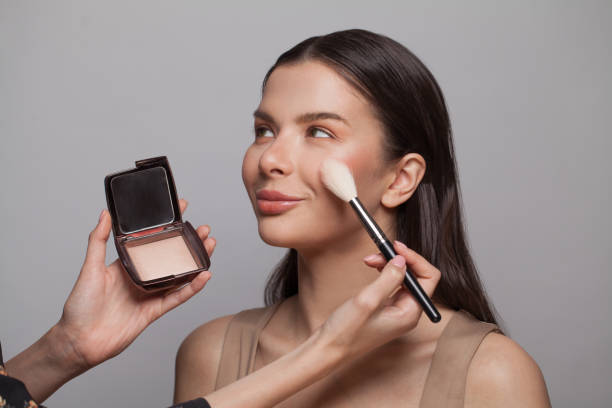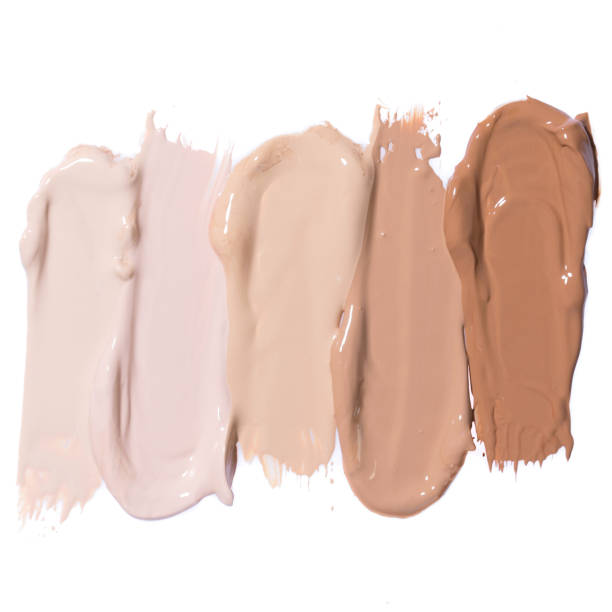One of the most crucial steps in achieving a flawless makeup look is finding the right foundation to match your skin tone. However, beyond the visible surface color, lies a less apparent aspect—undertones. These subtle hints of color influence your overall hue and determine which foundation shade will blend seamlessly with your skin. In this article, we’ll guide you through the process of identifying your undertones and selecting the perfect foundation match. Whether you’re cool, warm, or neutral, unlocking the secret to your undertones is the gateway to an impeccable complexion.
Understanding Undertones
Before diving into the vast sea of foundation shades, it’s essential to comprehend what undertones are. Simply put, undertones are the colors underneath the surface of your skin that affect your overall hue. Unlike your skin tone, which can change due to factors like sun exposure or skin conditions, undertones remain consistent. There are three primary undertones: cool, characterized by hints of pink or blue; warm, featuring yellow, peach or golden hues; and neutral, a balanced mix of both cool and warm tones. To identify your undertone:
- Look at the veins on the inside of your wrist. If they appear blue or purple, you likely have cool undertones; greenish veins suggest warm undertones; and if you can’t determine if they are blue or green, you might have a neutral undertone.
- Consider how your skin reacts to the sun. If you burn easily, you likely have cool undertones, while those who tan might lean towards warm undertones.
- Think about which jewelry makes your skin glow. Silver typically complements cool undertones, gold enhances warm undertones, and if both suit you, you might be neutral.
- Observe how certain colors affect your look. Cool-toned individuals often look best in blues and greens, while warm-toned individuals shine in yellows and oranges; neutral undertones can wear a mix with similar impact.
The Importance of Natural Light
When matching foundation to your skin tone, always do so in natural light. Artificial lighting can distort colors, leading to a mismatch. Stand near a window or step outside to get the most accurate view of your skin and the foundation shades. If you’re in a store, ask for a mirror and walk over to a location with natural light. Swipe a small amount of foundation on your jawline—it’s the ideal place since it offers a true representation that blends your face and neck. The shade that disappears into your skin without much blending is likely your perfect match. Don’t rush; observe how the foundation looks after a few minutes, as some may oxidize and change color slightly once exposed to air.

Testing and Sampling Foundations
Selecting the right foundation involves a bit of trial and error. Department stores and makeup counters often provide samples, an excellent way to test how a foundation behaves on your skin over the course of a day. When testing, apply a strip of the potential foundation from the center of your cheek down to your neck. The right shade should blend seamlessly with both areas. Pay attention to coverage, finish (matte, dewy, or natural), and how comfortable it feels on your skin. It’s also wise to check if the formula works with your skin type—oily, dry, combination, or sensitive.
Adjusting for Seasonal Changes
Your skin tone may fluctuate with the seasons, which means your foundation shade might change as well. In the warmer months, you may need a shade deeper than your winter color. Conversely, during colder times, your summer shade may be too dark. Invest in two foundations—one for when your skin is at its lightest, and another for its darkest—and blend the two to customize the shade to match your current skin tone. Having a lighter concealer and a bronzer in your kit can also help you adjust your foundation shade as needed, by either lightening or warming up the overall tone.
Embracing Your Unique Skin Tone
Remember, matching foundation is a personal journey, and your unique skin tone deserves the perfect counterpart. The foundation should be imperceptible, creating an even canvas for the rest of your makeup, rather than standing out. If a brand doesn’t carry your exact match, don’t hesitate to mix shades. Some companies even offer customized foundations. Lastly, don’t forget about your skin’s overall health. A well-moisturized and primed face will hold foundation better, resulting in a smoother application and a more natural finish. Invest in skin care, and your foundation will look even better.
Conclusion
In conclusion, finding the right foundation involves understanding your skin’s undertones, examining the color in natural light, and sampling products to see how they blend and wear throughout the day. Don’t be discouraged by the process—it’s a valuable investment in your beauty routine. Seasonal changes can influence your skin color, demanding flexibility in your foundation choices. Nevertheless, with patience and practice, you can unlock the secrets to a perfect foundation match, enhancing your natural beauty and boosting your confidence.
FAQs
- How do I know if a foundation is the right shade for me?
The right shade should blend smoothly into your skin without leaving any lines or discoloration. Test it on your jawline in natural light; the color that disappears is your match. - Can I mix foundation shades to get my perfect match?
Yes, mixing shades is a common technique, especially if your skin tone changes seasonally or if you can’t find an exact match in a single product. - What if I have neutral undertones?
If you have neutral undertones, look for foundations labeled as ‘neutral’ or try mixing a warm and a cool shade to achieve a balance that complements your skin. - How can I ensure my foundation doesn’t oxidize and change color?
A primer can help to create a barrier between your skin and the foundation. Additionally, set your foundation with a powder to minimize oxidation. - Is there a difference between skin tone and undertone?
Yes, your skin tone is the surface color of your skin, which can change due to various factors. Undertones are the subtle hues underneath the skin that remain consistent and affect your overall coloring. Identifying your undertones is key to selecting the right foundation.
